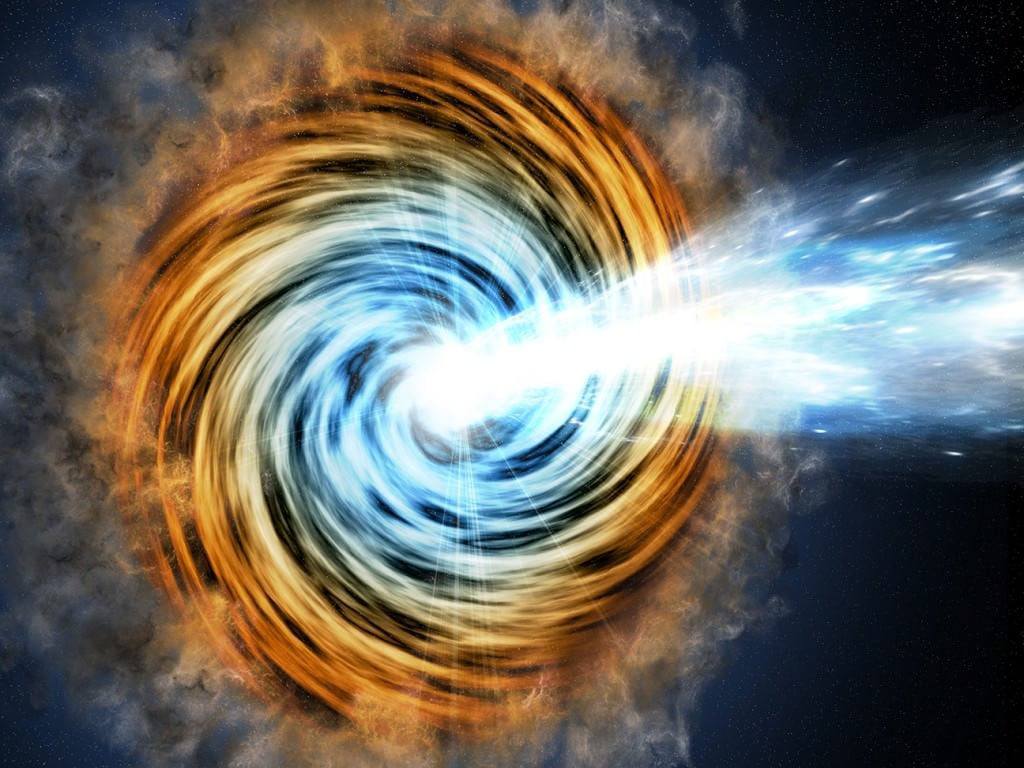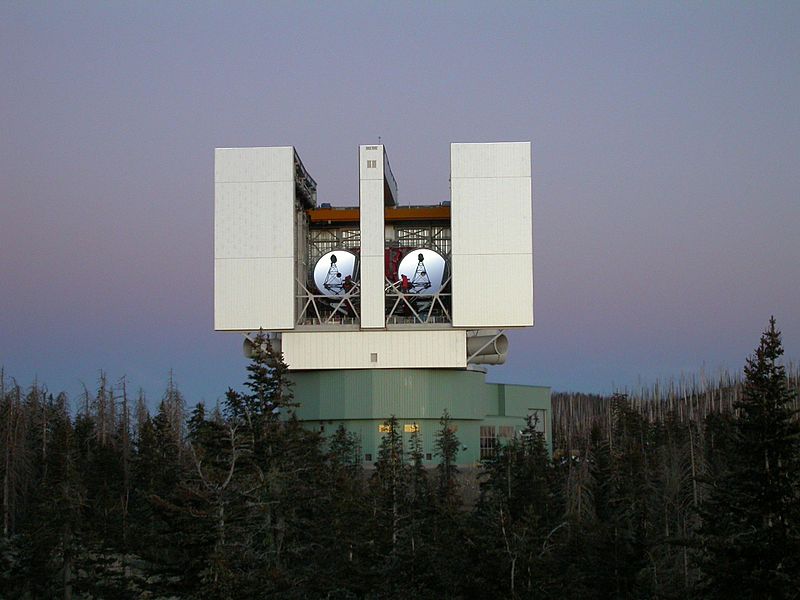Since the 1950s, astronomers have known of galaxies that have particularly bright centers - aka. Active Galactic Nuclei (AGNs) or quasars. This luminosity is the result of supermassive black holes (SMBHs) at their centers consuming matter and releasing electromagnetic energy. Further studies revealed that there are some quasars that appear particularly bright because their relativistic jets are directed towards Earth.
In 1978, astronomer Edward Speigel coined the term " blazar " to describe this particular class of object. Using the telescopes at the Large Binocular Telescope Observatory (LBTO) in Arizona, a research team recently observed a blazar located 13 billion light-years from Earth. This object, designated PSO J030947.49+271757.31 (or PSO J0309+27), is the most distant blazar ever observed and foretells the existence of many more!
The study that describes their findings was led by Silvia Belladitta, a Ph.D. student at the University of Insubria while working for the Italian National Institute for Astrophysics (INAF). Her research was supervised by INAF researchers Alberto Moretti and Alessandro Caccianiga and included an international team of researchers from the universities of Bologna, Milano-Bicocca, and Oslo.
As they state in their study, which recently appeared in the journal *Astronomy & Astrophysics*, the object was selected by cross-matching data from the Very Large Array (VLA) Sky Survey and the Panoramic Survey Telescope Rapid Response System (Pan-STARRS) PS1 database. They then conducted observations using NASA's Swift Space Telescope and the Large Binocular Telescope (LBT).
Already, astronomers suspected that PSO J0309+27 was a very distant object. While the observations made with the Swift's X-Ray Telescope (XRT) showed that it was very bright in the X-ray band (similar to other known blazars), it was the optical observations obtained with the Multi-Double Object Spectrographs (MODS) on the LBT that confirmed that it was the most distant blazar observed to date.
Like all blazars, PSO J0309+27 is a bright radio source and has a stream of high-energy particles traveling close to the speed of light (aka. a relativistic jet) extending from its center and can be seen from across the known Universe. However, these jets are only visible along a narrow line of sight, which means the Earth has to be aligned with it and makes detection rather difficult.
But since it was found at a distance of 13 billion light-years from Earth, that means that this blazar was active less than one billion years after the Big Bang. What's more, it is one of the earliest known examples of an AGN that is not obscured by dust, which gives astronomers the opportunity to study this object across the entire electromagnetic spectrum.
As Belladitta explained in a recent INAF press release:
"The spectrum that appeared before our eyes confirmed first that PSO J0309+27 is actually an AGN, or a galaxy whose central nucleus is extremely bright due to the presence, in its center, of a supermassive black hole fed by the gas and the stars it engulfs. "In addition, the data obtained by LBT also confirmed that PSO J0309+27 is really far away from us using the shift of the color of its light towards red or redshift with a record value of 6.1, never measured before for a similar object."
In short, PSO J0309+27 is the most powerful persistent radio and X-ray source to ever be viewed at these distances. Based on their observations with the LBT (which they are still analyzing), Belladitta and her colleagues estimate that the central black hole powering this blazar is about one billion times the mass of the Sun. Compared that to our own galaxy's SMBH (Sagittarius A*), which is about four million times the mass of our Sun.
Its discovery also hints at the existence of hundreds of similar objects in the primordial Universe, but whose orientation makes them too difficult to detect directly. Therefore, the existence of PSO J0309+27 allows astronomers to quantify the number of AGNs with powerful relativistic jets present in the early Universe.
What's more, blazars like this that existed less than a billion years after the Big Bang likely represent the "seeds" from which all SMBHs that exist in the Universe today emerged. Further research in this area could provide new insights into the evolution of the Universe, leading to new cosmological models. Said Belladitta:
Thanks to our discovery, we are able to say that already in the first billion years of life of the universe, there existed a large number of very massive black holes emitting powerful relativistic jets. This result places tight constraints on the theoretical models that try to explain the origin of these huge black holes in our universe."
For some time, astronomers have understood that there is a connection between galactic evolution and the black holes at their centers. Knowing how and when supermassive black holes emerged is sure to lead to some unique insights in the coming years, especially when next-generation telescopes begin looking to the very beginning of the Universe.
Further Reading: INAF*, Astronomy & Astrophysics*
 Universe Today
Universe Today


